No, you cannot keep angelfish and shrimp together in the same tank. Angelfish, being naturally aggressive and omnivorous, will not hesitate to prey on smaller creatures like shrimp. The only exception might be the larger Amano shrimp in a heavily planted tank, but even then, it’s a risk.
As an avid shrimp keeper, I’ve had my fair share of experiences with various tank mates for my shrimp. One such experience that stands out is my attempt to house angelfish and shrimp together. Spoiler alert: it didn’t end well. Angelfish, with their aggressive and omnivorous nature, see shrimp as a tasty snack rather than a tank mate. This guide will delve into the reasons why these two species don’t mix and provide insights into the world of shrimp keeping.
Understanding the Aggressive Nature of Angelfish
Angelfish, known for their majestic beauty and graceful swimming patterns, are a popular choice among aquarists. However, beneath their elegant exterior lies an aggressive nature that can often be a surprise to those new to fish keeping.
Angelfish belong to the Cichlid family, a group of fish renowned for their territorial behavior. This territoriality is a key driver of their aggression. In the wild, angelfish establish and defend their own space, warding off any intruders that dare to venture too close. This behavior carries over into the aquarium setting, where angelfish will often claim a particular area of the tank as their own and defend it fiercely.
Another factor contributing to the aggressive nature of angelfish is their diet. As omnivores, angelfish have a diverse diet that includes both plant-based foods and meat-based foods. This means that smaller creatures, like shrimp, can easily become a meal for an angelfish. Their hunting instincts kick in when they see these smaller creatures, viewing them not as potential tank mates, but as food.
Angelfish are also known to exhibit increased aggression during breeding periods. When angelfish pair off to breed, they become extremely protective of their eggs and will lash out at any creature they perceive as a threat, regardless of size.
It’s important to note that while angelfish are naturally aggressive, the level of aggression can vary from fish to fish. Factors such as the individual fish’s personality, the tank environment, and the presence of other fish can all influence how aggressive an angelfish becomes.
Understanding the aggressive nature of angelfish is crucial when considering tank mates. Smaller, peaceful creatures like shrimp are not suitable companions for angelfish due to this aggression. Instead, angelfish should be housed with larger, more robust fish that can hold their own against an angelfish’s assertive behavior.
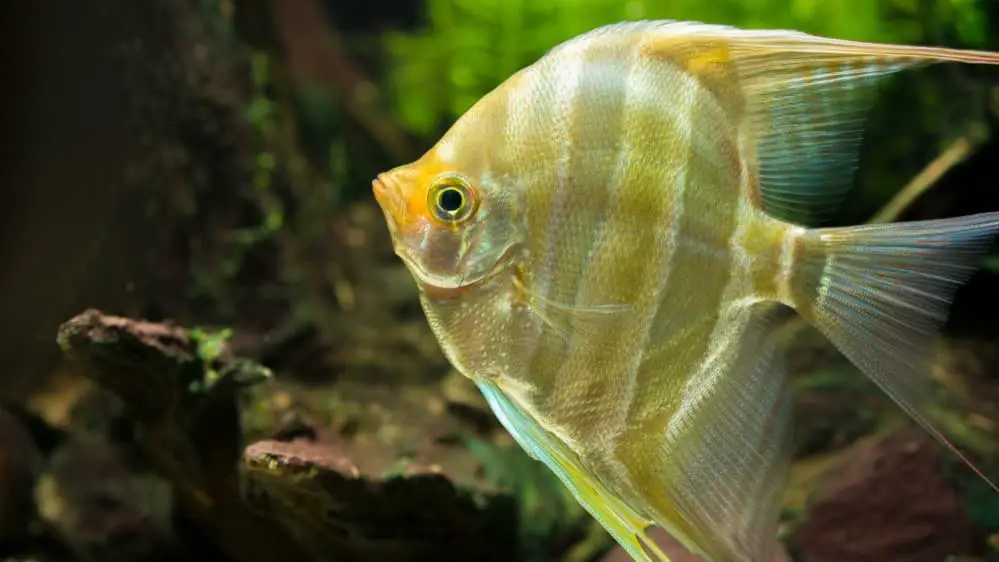
Why Shrimp are an Easy Target for Angelfish
Shrimp, with their small size and peaceful nature, are unfortunately an easy target for angelfish. There are several reasons why shrimp find themselves on the wrong end of the food chain when sharing a tank with angelfish.
Firstly, the size of the shrimp plays a significant role. Shrimp are generally much smaller than angelfish, making them an easy meal. Angelfish are opportunistic feeders and won’t hesitate to eat anything that fits into their mouths. The size of the shrimp makes them an easy target, and they can be quickly overwhelmed by the larger and more aggressive angelfish.
Secondly, shrimp are not equipped to defend themselves against angelfish. Unlike some other aquatic creatures, shrimp lack the physical attributes needed to fend off an angelfish. They don’t have sharp teeth or spines to ward off predators, and their exoskeletons, while providing some protection, are not robust enough to withstand the attacks of an angelfish.
Thirdly, shrimp are naturally peaceful and non-aggressive creatures. They spend most of their time scavenging for food on the tank floor and are not equipped to deal with the aggressive behavior of angelfish. Their peaceful nature and lack of defensive behavior make them an easy target.
Lastly, shrimp often exhibit vibrant colors which, while beautiful, can attract unwanted attention from angelfish. These colors can make shrimp more visible and enticing to angelfish, increasing their chances of becoming a meal.

The Exception: Amano Shrimp and Angelfish
While it’s generally not recommended to keep shrimp and angelfish together, there’s one potential exception to this rule: the Amano shrimp. Named after the renowned aquarist Takashi Amano, Amano shrimp are larger than most other freshwater shrimp species, which can make them less of a target for angelfish.
Amano shrimp can grow up to 2 inches in length, making them less likely to be seen as an easy meal by angelfish. Their larger size can deter angelfish from attempting to eat them, as angelfish tend to prefer smaller, easier-to-catch prey.
Another advantage Amano shrimp have is their coloration. Unlike brightly colored shrimp species like cherry or crystal red shrimp, Amano shrimp have a translucent grey color that allows them to blend into their surroundings. This camouflage can help them avoid attracting the attention of angelfish.
However, even though Amano shrimp are larger and less conspicuous than other shrimp species, they’re still not entirely safe in a tank with angelfish. Angelfish are opportunistic feeders and may still attempt to eat Amano shrimp if they’re hungry or if the shrimp is weak or sick.
Furthermore, Amano shrimp, like all shrimp, are peaceful creatures that aren’t equipped to defend themselves against the aggressive behavior of angelfish. They also prefer a peaceful environment and can become stressed in a tank with aggressive fish, which can impact their health and lifespan.
In conclusion, while Amano shrimp are less likely to be preyed upon by angelfish due to their larger size and less conspicuous coloration, they’re still at risk. If you decide to try keeping Amano shrimp with angelfish, it’s crucial to provide plenty of hiding spots and monitor the tank closely for any signs of aggression. However, the safest option is always to keep shrimp and angelfish in separate tanks.
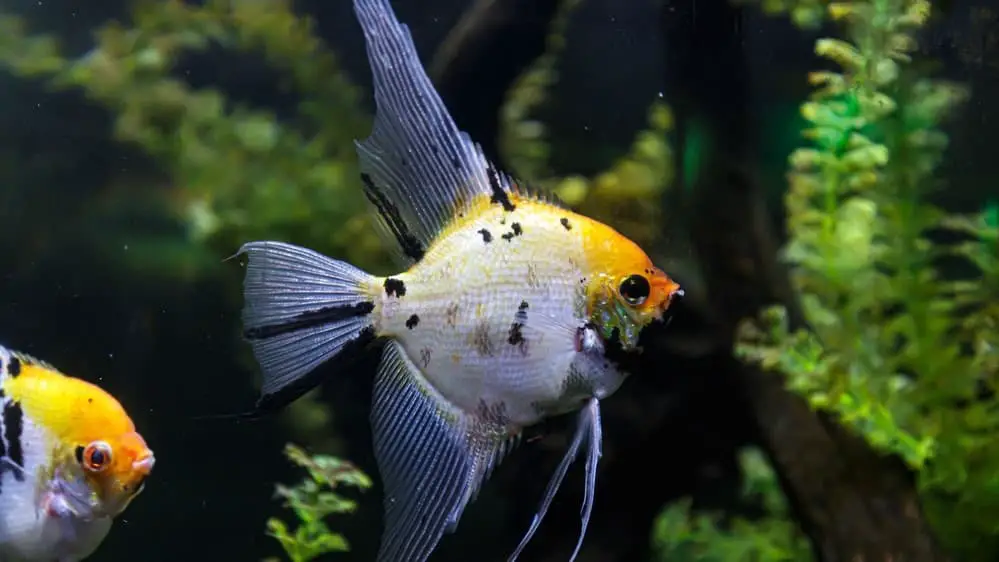
Tank Conditions for Angelfish and Shrimp
Creating the right tank conditions is crucial for the health and wellbeing of both angelfish and shrimp. However, their requirements differ significantly, making it challenging to create a shared environment that suits both species.
Angelfish Tank Conditions:
Angelfish are tropical freshwater fish that require warm water temperatures. They thrive in temperatures between 76°F and 82°F. Angelfish also prefer slightly acidic to neutral water with a pH range of 6.0 to 7.5.
When it comes to tank size, angelfish need plenty of space due to their size and territorial nature. A minimum of 30 gallons is recommended for a single angelfish, but a larger tank is always better. Angelfish also appreciate a well-decorated tank with plenty of plants and hiding spots.
Shrimp Tank Conditions:
Shrimp, on the other hand, have different requirements. Most shrimp species prefer cooler water temperatures than angelfish, typically between 65°F and 75°F. However, some species like the Amano shrimp can tolerate warmer temperatures.
The pH requirements for shrimp can vary depending on the species, but most prefer slightly acidic to neutral water, similar to angelfish. A pH range of 6.5 to 7.5 is generally suitable for most shrimp species.
Shrimp don’t require as much space as angelfish. A 10-gallon tank is usually sufficient for a small colony of shrimp. However, they do appreciate a well-planted tank with plenty of hiding spots to escape from potential predators.
The Challenge:
The challenge in creating a shared environment for angelfish and shrimp lies in their differing temperature requirements. While some shrimp species can tolerate the warmer temperatures preferred by angelfish, most cannot. This difference in temperature requirements can make it difficult to create a tank environment that is suitable for both angelfish and shrimp.

Alternative Small Fish to Angelfish for a Shrimp Tank
If you’re looking to create a peaceful community tank with shrimp, angelfish may not be the best choice due to their predatory nature. However, there are several small, peaceful fish species that can make excellent tank mates for shrimp. Here are a few options:
- Endler’s Livebearers: Endler’s Livebearers are small, colorful fish that are known for their peaceful nature. They typically grow to only about an inch in size, making them a safe choice for a shrimp tank.
- Ricefish: Ricefish are small, peaceful fish that are often overlooked in the aquarium hobby. They are hardy and easy to care for, making them a great choice for beginners. Ricefish typically grow to about 1.5 inches in size and do well in community tanks with shrimp.
- Cloud Minnows: Cloud Minnows, including both White Cloud Mountain Minnows and Golden Cloud Minnows, are small, hardy fish that are often recommended for beginner aquarists. They are peaceful schooling fish that grow to about 1.5 inches in size and can coexist peacefully with shrimp.
- Pygmy Corydoras: Pygmy Corydoras are tiny catfish that only grow up to 1.5 inches. They are peaceful bottom dwellers and won’t bother your shrimp. They’re also great for keeping the substrate clean.
- Boraras Brigittae (Chili Rasbora): These tiny fish, growing only up to 0.8 inches, are known for their bright red color. They are peaceful and do well in shrimp tanks.
- Ember Tetras: Ember Tetras are small, brightly colored fish that grow up to 1 inch. They are peaceful and do well in community tanks with shrimp.
- Dwarf Rasbora: Dwarf Rasboras are tiny fish that grow up to 1 inch. They are peaceful and won’t bother your shrimp.
- Celestial Pearl Danios: These small fish, also known as Galaxy Rasboras, grow up to 1 inch. They are peaceful and their stunning colors make them a popular choice for community tanks.

Signs of Stress in Shrimp in a Mixed Species Tank
Shrimp, like all living creatures, can experience stress, especially when placed in a mixed species tank with potential predators. It’s crucial for shrimp keepers to recognize the signs of stress in shrimp to ensure their wellbeing. Here are some common signs of stress in shrimp:
1. Hiding: While it’s normal for shrimp to hide occasionally, especially during molting, excessive hiding can be a sign of stress. If your shrimp are constantly hiding and not coming out to eat or explore, it could indicate that they’re feeling threatened by other tank inhabitants.
2. Erratic Swimming: Shrimp usually move around in a deliberate, grazing manner. If you notice your shrimp swimming erratically or darting around the tank, this could be a sign of stress. This behavior is often a reaction to a perceived threat or poor water conditions.
3. Lack of Appetite: Shrimp are usually voracious eaters. If you notice that your shrimp are not eating or showing less interest in food, this could be a sign of stress.
4. Color Loss: Shrimp often lose color when they’re stressed. If your normally vibrant shrimp are looking pale or translucent, it could be a sign that they’re not feeling well.
5. Frequent Molting: Shrimp naturally molt every few weeks, but if you notice your shrimp molting more frequently, it could be a sign of stress. Frequent molting can be a response to a variety of stressors, including poor water conditions, dietary issues, or harassment from other tank inhabitants.
6. Inactivity: Shrimp are usually quite active, constantly foraging for food and exploring their environment. If your shrimp are spending a lot of time motionless or not interacting with their environment, it could be a sign of stress.
In a mixed species tank, it’s crucial to monitor your shrimp closely for these signs of stress. If you notice any of these behaviors, it’s important to identify the cause and take action to alleviate the stress. This could involve adjusting the water conditions, providing more hiding spots, or removing aggressive tank mates. Remember, a stress-free shrimp is a happy and healthy shrimp.
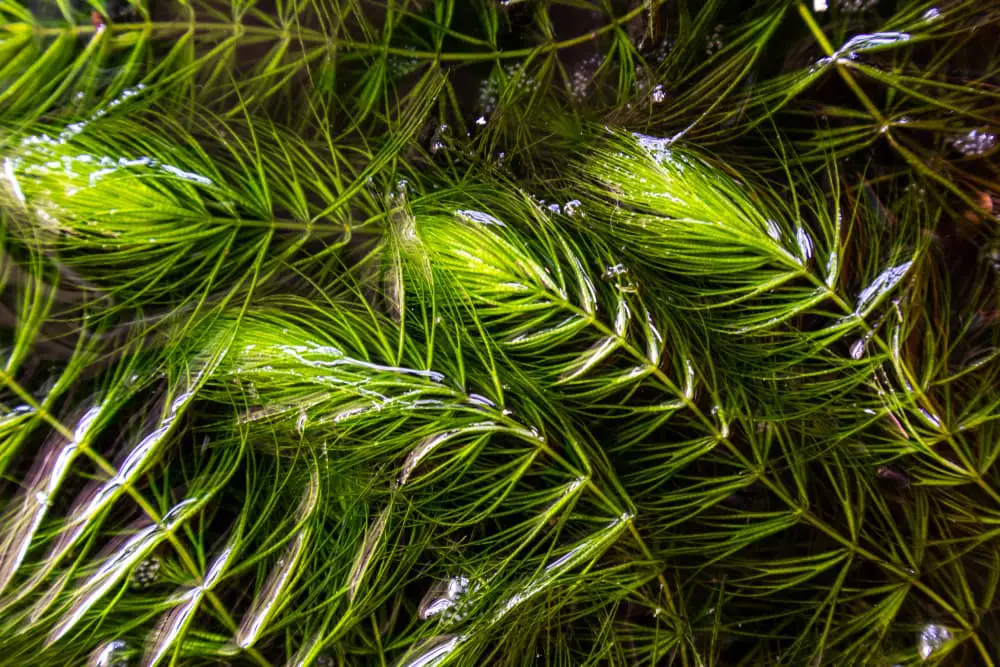
Steps to Introduce Shrimp and Fish into the Same Tank Safely
Introducing shrimp and fish into the same tank requires careful planning and execution to ensure the safety and wellbeing of both species. Here are some steps to help you do this safely:
1. Choose Compatible Species: The first step is to choose species that are known to be compatible. As we’ve discussed, angelfish and shrimp generally don’t mix well due to the predatory nature of angelfish. Instead, opt for small, peaceful fish species like Endler’s Livebearers, Ricefish, or Cloud Minnows.
2. Set Up the Tank Properly: Before introducing any inhabitants, ensure your tank is properly set up. This includes cycling the tank to establish beneficial bacteria, setting the correct temperature and pH, and adding plenty of plants and hiding spots for the shrimp.
3. Introduce Shrimp First: It’s generally recommended to introduce shrimp to the tank before the fish. This gives the shrimp a chance to acclimate to their new environment and find hiding spots before the fish are added.
4. Acclimate Gradually: When introducing shrimp and fish to the tank, do so gradually to avoid shock. This can be done by floating the bag they came in on the surface of the tank for about 15-30 minutes to equalize the temperature. Then, slowly add small amounts of tank water to the bag over another 15-30 minutes to acclimate them to the water parameters.
5. Monitor Closely: After introducing the shrimp and fish to the tank, monitor them closely for any signs of stress or aggression. If you notice any issues, be prepared to separate them if necessary.
6. Feed Adequately: Make sure both your shrimp and fish are getting enough to eat. If the fish are hungry, they may be more likely to go after the shrimp.
7. Regular Maintenance: Regular tank maintenance is crucial to keep the water conditions optimal and reduce stress for both shrimp and fish. This includes regular water changes, testing the water parameters, and keeping the tank clean.
Remember, even with these steps, there’s always a risk when introducing shrimp and fish into the same tank. Always monitor your tank closely and be prepared to make adjustments as necessary to ensure the safety and wellbeing of your tank inhabitants.
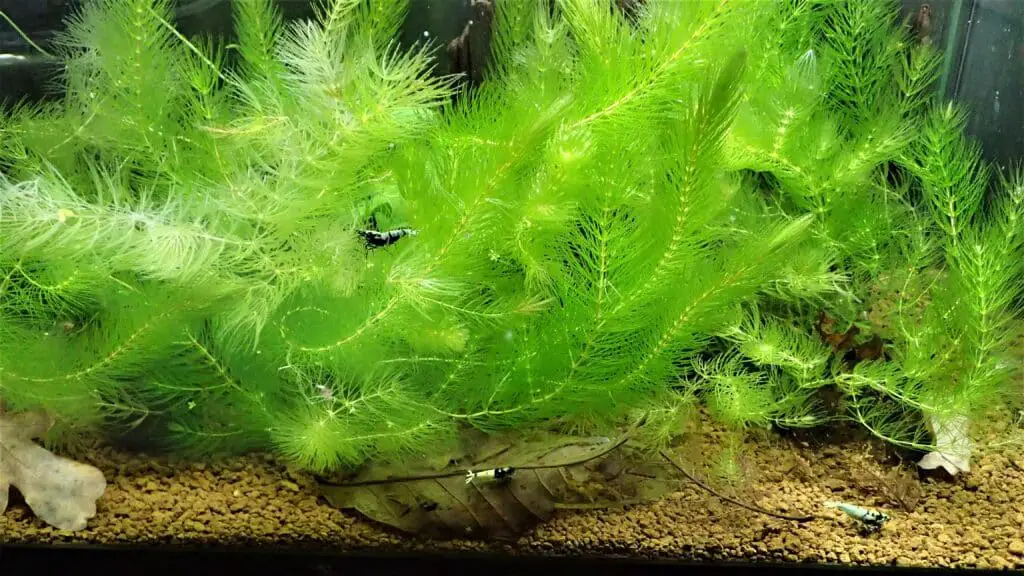
Beneficial Plants for Shrimp Survival in a Community Tank
Java Moss: This is a favorite among shrimp keepers. It’s a low-maintenance plant that grows in a dense, tangled manner, providing excellent cover for shrimp. Shrimp love to forage among the moss, and it also serves as a great place for them to hide from potential predators.
Hornwort: Hornwort is a fast-growing, bushy plant that can provide ample hiding spaces for shrimp. It’s also a floating plant, which means it can provide cover from above, offering additional protection for shrimp against surface-dwelling fish.
In addition to providing hiding spots, these plants also contribute to the overall health of the aquarium by helping to improve water quality and providing a source of food for the shrimp. They can pick off the biofilm and tiny organisms that grow on the plant surfaces, supplementing their diet.
So, if you’re planning to keep shrimp, especially with small fish, consider incorporating these plants into your tank setup. They not only enhance the aesthetic appeal of your aquarium but also increase the survival rate of your shrimp.
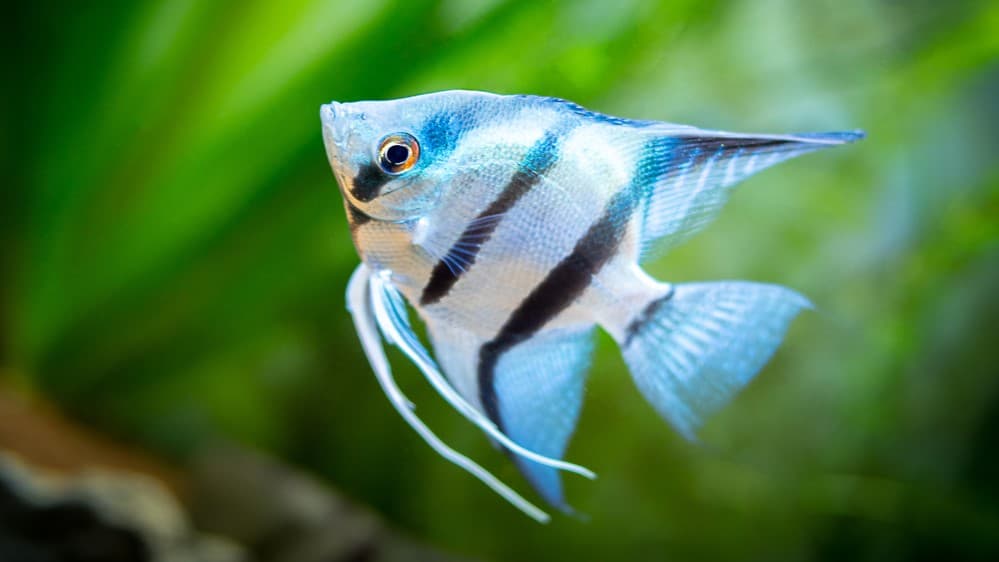
Conclusion keeping angelfish and shrimp together
While angelfish are beautiful and captivating creatures, they are not suitable tank mates for shrimp due to their aggressive and omnivorous nature. The only possible exception is the larger Amano shrimp, but even then, it’s a risk. As shrimp keepers, our priority should always be to provide a safe and stress-free environment for our shrimp. So, it’s best to keep angelfish and shrimp in separate tanks. Remember, a happy shrimp is a healthy shrimp. Happy Shrimp Keeping!
FAQs
Q. Can I keep angelfish and shrimp together? A. No, angelfish are aggressive and will likely prey on the shrimp.
Q. Are there any shrimp that can survive with angelfish? A. Amano shrimp, due to their larger size, might have a chance in a heavily planted tank. However, it’s still a risk.
Q. Can angelfish and shrimp share the same tank conditions? A. While there are similarities in pH requirements, their temperature needs vary greatly, making it difficult to create a suitable environment for both.
